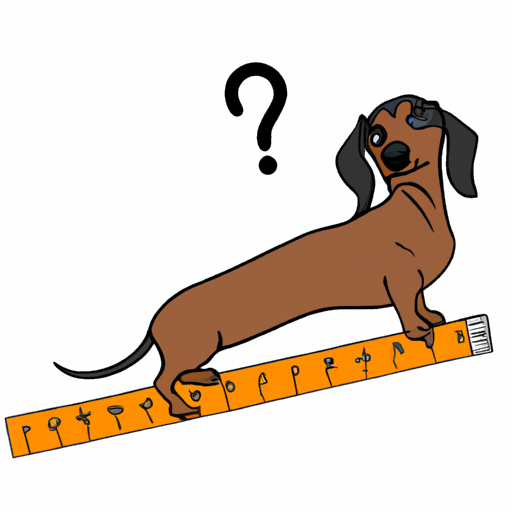In your quest to understand the canine world, you’ve probably come across the Dachshund, fondly known as the ‘wiener dog’ due to its elongated body. A peculiar sight, isn’t it? You’ve probably wondered, “Why are wiener dogs so long?” Well, brace yourself for an enlightening journey into the world of these unique canines.
Table of Contents
- A Brief History of the Dachshund
- The Science Behind Their Length
- Health Implications of Their Stature
- Frequently Asked Questions
Key Takeaways
- Dachshunds were bred to be long for practical purposes of hunting and burrowing.
- Their elongated bodies are a result of a genetic condition called chondrodysplasia.
- Despite their length, dachshunds are generally healthy dogs but are prone to certain health issues like Intervertebral Disc Disease.
A Brief History of the Dachshund
The Dachshund’s elongated body is the result of hundreds of years of selective breeding. Originating from Germany in the 15th century, the Dachshund was bred to be a tenacious hunter. Onetopdog has an interesting article, The Origin of Dog Breeds, which provides more insight into the historical background of dogs like the Dachshund.
The term Dachshund literally translates to ‘badger dog’ in German. This breed was specifically designed to hunt badgers and other burrow-dwelling animals. With their long bodies, short legs, and robust chests, Dachshunds could easily navigate through narrow tunnels, pursuing their prey with determination. This gave them an edge over other breeds, making them highly valued hunting companions.
The Science Behind Their Length
Dachshunds owe their peculiar body shape to a genetic condition called chondrodysplasia. This condition affects the development of the dog’s cartilage, leading to shorter, stouter limbs and a longer spine.
This genetic characteristic is dominant in Dachshunds, meaning that it only takes one parent with the gene to pass it on to the offspring. This genetic blueprint has been reinforced through selective breeding over the years to maintain the breed’s distinctive shape.
The Dachshund’s body is not just for show; it serves a practical purpose. Their long, low stature is perfect for navigating through narrow burrows while their robust chests house large lungs, enabling them to have good endurance while hunting.
To learn more about the Dachshund’s genetic makeup and how it influences their physique, check out this comprehensive genetic study on the breed.
Health Implications of Their Stature
While the Dachshund’s long body is beneficial for its original hunting purposes, it also predisposes them to certain health risks. The most significant of these is Intervertebral Disc Disease (IVDD), a condition that affects the discs in the spine.
According to an article on Onetopdog titled Common Health Issues in Dogs, IVDD is common in breeds with long spines and short legs. It can lead to pain, paralysis, and in severe cases, it may require surgery.
Despite these potential health issues, with proper care and regular check-ups, Dachshunds can lead healthy, active lives. It’s crucial, however, to prevent them from jumping off high places or going up and down the stairs frequently, as this can put excess strain on their spines.
Frequently Asked Questions
1. Why are Dachshunds also called ‘wiener dogs’?
The term ‘wiener dog’ is a playful nickname given to Dachshunds due to their resemblance to a hot dog or wiener.
2. Are Dachshunds good family dogs?
Yes, Dachshunds can make excellent family pets. They are known for their loyalty, intelligence, and playful nature. However, it’s important to socialize them well, as they can be somewhat standoffish with strangers.
3. How long do Dachshunds live?
On average, Dachshunds live between 12 to 16 years. However, with good care and a healthy lifestyle, some Dachshunds have been known to live into their early twenties.
By understanding the history and science behind the Dachshund’s distinctive physique, you can better appreciate these charming, tenacious dogs. Despite their potential health challenges, with proper care and love, these ‘wiener dogs’ can make loyal, delightful companions.
To delve deeper into the world of Dachshunds, you may want to read Onetopdog's article The Dachshund: A Detailed Breed Guide that provides more comprehensive information about this fascinating breed.



